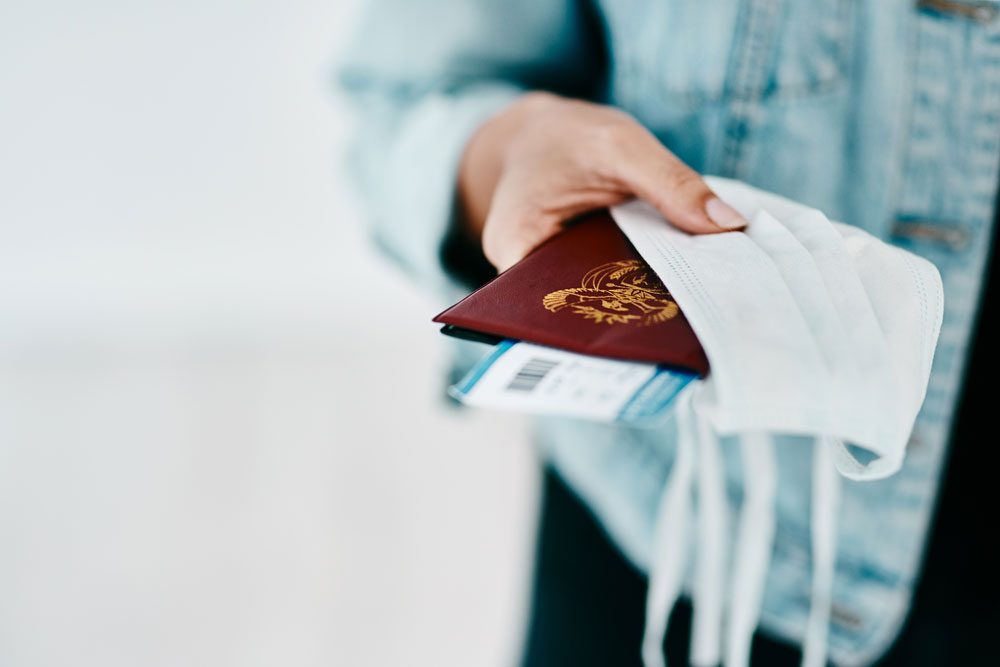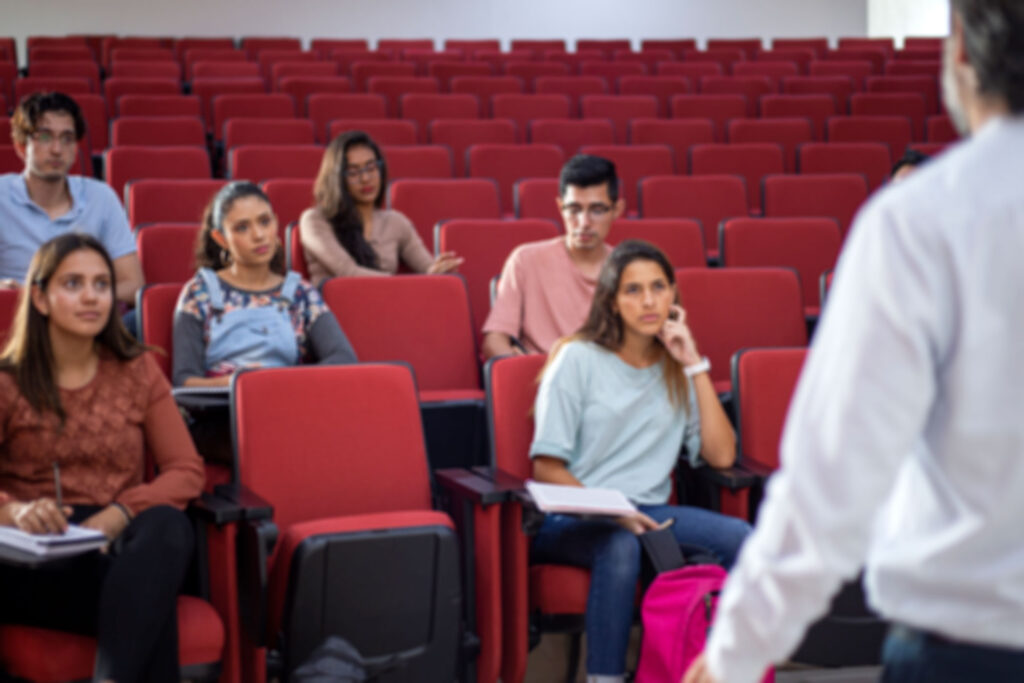As an F1 visa student, you probably have many questions about health insurance options for international students studying in the United States.
It's important to understand that having health insurance is crucial for protecting your health and finances in case of unexpected medical emergencies.
One option available to F1 visa students is to purchase an insurance plan through their school. Many high schools, universities, and colleges work with companies to offer student health insurance plans that can provide coverage for various medical services, including doctor visits, hospitalizations, mental health care, and prescription drugs.
Another option is to purchase a plan on your own. This can be a good option if your school does not offer health insurance plans or if you prefer to have more control over your coverage.
However, it's important to carefully research different plans to ensure they meet the health insurance requirements of your school and provide adequate health insurance coverage for your needs.
This blog covers the most common questions about insurance for F1 international students and can help you find the best international student health insurance plan to meet your needs.
FAQ #1: Do F1 visa students need health insurance in the USA?
While there is no US government requirement for international students to buy health insurance, most schools require it. Not having an insurance plan can actually prevent you from attending the school of your choice!
The requirement to purchase health insurance is meant to ensure international students are protected from unexpected medical expenses that can be quite costly in the US.
FAQ #2: What insurance coverage do F1 visa students need?
Again, the US Department of State does not require any specific medical insurance coverage. However, you need to check your school's minimum requirements for international student insurance plans.
For example, the University of New Mexico’s health insurance requirements for international student insurance include:
- $100,000 minimum per person per accident or illness
- $25,000 for repatriation of remains
- $50,000 for emergency medical evacuation
- No more than $500 deductible per accident or illness
- Coinsurance must not exceed 25% payable by the exchange visitor or sponsor
Be sure to contact your academic institution’s international office to determine if they have specific requirements for international student medical insurance.
FAQ #3: Can F1 visa students purchase health insurance from any provider?
The short answer: It depends on your school's requirements.
Most international students in the US fall into one of these three health insurance scenarios:
- Mandatory Group Plan
Your middle school, high school, university, or college may mandate that you purchase health insurance from a mandatory group plan, which means you have to purchase health insurance from a provider selected by your school.
This can be helpful because your school will have already done the research and selected a provider they feel provides comprehensive coverage for its students and meets their requirements.
However, for some international students, the mandatory group plan can cost more than expected or perhaps not that international student’s medical needs.
In this case, you may be able to complete a waiver form to opt out of the mandatory group plan. However, you will need to show that you can obtain insurance that meets or exceeds your school's coverage requirements.
- Voluntary international student health insurance plans
Another scenario could be that instead of mandating you opt into the mandatory group plan, your school may provide voluntary health insurance plan(s) from which you can choose. This means you can review the medical insurance plans and select the plan best for you.
You may also have the option to submit a waiver form if there isn't a student health insurance plan that fits your needs,but you will need to show that you can obtain coverage that meets or exceeds your school's coverage requirements.
.
- Find your own student health insurance provider
If your school does not have a mandatory group plan, or provide voluntary plans from which you can choose, you have the option to shop for, select and purchase medical insurance that meets your needs and budget, and provide proof of coverage to your school.
FAQ #4: What happens if an F1 visa student does not have health insurance?
It's understandable that for many international students, every penny counts when studying in the US, but if you're looking for ways to save money, cutting your medical care coverage is not a wise decision for many reasons.
First, if you do not show your school proof that you have health insurance that meets its requirements, it could place a hold on your student account. This would mean you could not register for classes, which could ultimately affect your legal status in the country and prevent you from finishing your studies.
Secondly, while the US has stellar health care, if you don't have your own coverage, you could face extremely high medical bills and prescription costs.
So while F1 international students aren’t required by the US government to have health insurance, not having it can cause extreme stress and be financially devastating.
FAQ #5: What is a deductible and how does it affect my health insurance?
International students in the US usually scratch their heads at the word "deductible." We get it, it's probably something you have not encountered in your home country.
Simply explained, a deductible is an amount you must pay before your insurance plan "kicks in."
For example, you have a $500 deductible and you received a $1,000 medical bill. You must pay the $500 deductible first, then your insurance company will pay the remaining $500.
Generally speaking, plans with higher deductibles will have lower monthly premiums (payments), while plans with lower deductibles will have higher monthly premiums.
It's always important to review deductibles when reviewing insurance policies, especially if you have any pre-existing conditions, as they can really impact your out-of-pocket expenses.
FAQ #6: Can I use government-related health insurance (Obamacare) as an F1 visa student?
F1 visa students can look for a plan provided by “Obamacare”, also known as the Affordable Care Act. ACA plans are provided by private insurance companies, but they must meet minimum requirements established by the US government. But it can be a bit tricky to find a plan that takes into account your non-immigrant status.
Lewerglobal specializes in health insurance for international students so you can easily purchase an insurance policy that provides comprehensive coverage and meets your school or university requirements.
In Summary: Steps to Finding Health Insurance Coverage for F1 Visa International Students
Now that you have a better understanding of insurance for F1 international students, here is a summary of the next steps you can take:
- Check whether your school has a mandatory group plan. This is usually listed on the website of your international office, or you can ask an international student advisor.
- If there is a mandatory plan, and you'd like to find a different one, ask if you can select your own coverage and submit a waiver form.
- If your school provides voluntary plans, but they still don’t meet your needs, ask if you can select your own coverage and submit a waiver form.
- If you can select your own coverage (or if school doesn’t have a mandatory group plan or voluntary plan options), find a plan that meets your needs and budget.
- Purchase your insurance and complete and submit your waiver form (if necessary).
Additional tips when shopping for insurance
We provide other important tips on what to consider when shopping for insurance on our F1 Student Health Insurance page under "acquiring health insurance for F1 visa students."
Reliable Insurance for International Students with Lewerglobal
Whether you're an F1 visa student attending an English language school, private elementary school, secondary school, university, or community college, Lewerglobal offers affordable and comprehensive coverage for you.
Learn more by visiting our F1 Student Health Insurance page.
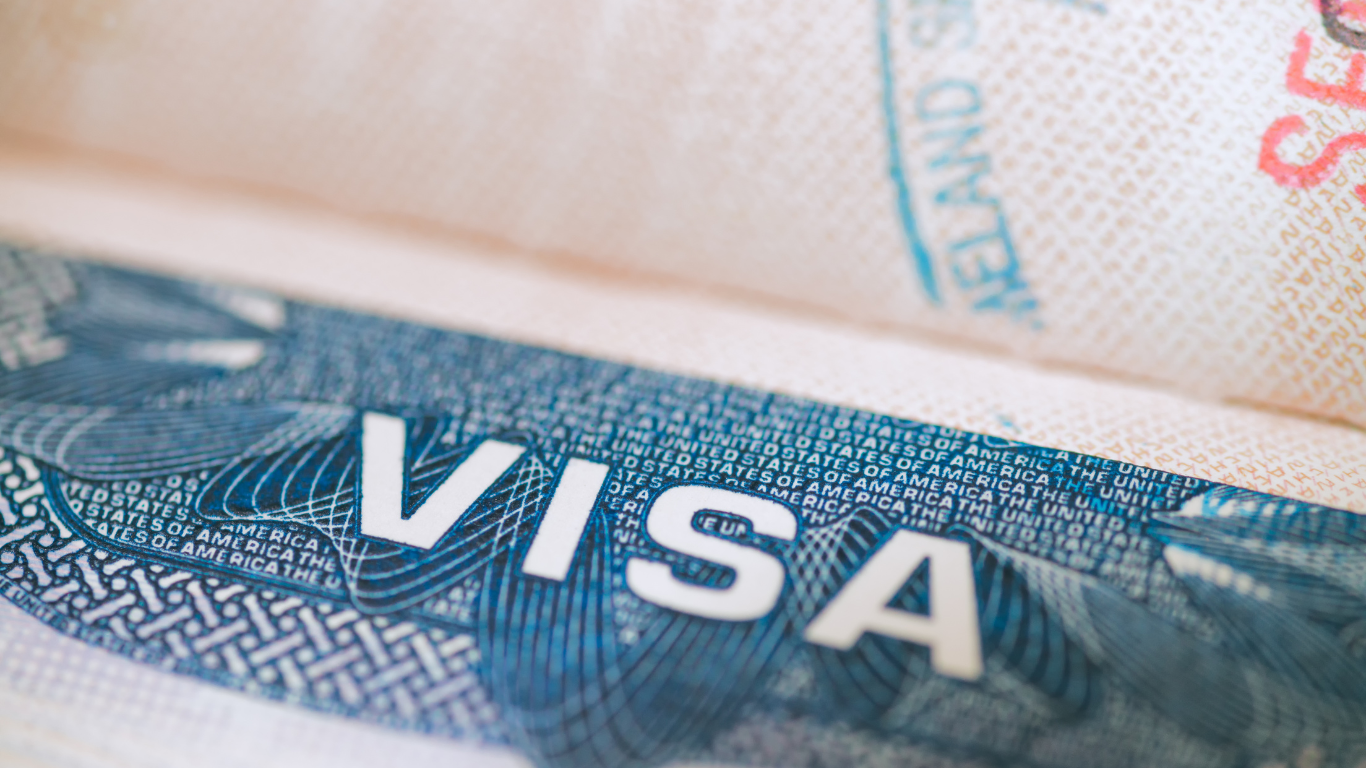
If you're an international student planning to study in the United States, most likely you will need an F1 visa to enter the country. An F1 visa allows you to enroll in a full-time academic program at a U.S. college or university. However, before obtaining an F1 visa, you must attend an interview at a U.S. embassy or consulate in your home country.
The F1 visa interview is a crucial step in obtaining an F1 visa. During the interview, a consular officer will evaluate your application and determine whether you meet the requirements for the visa.
The interview is an opportunity for you to demonstrate that you have a legitimate reason for studying in the United States and that you intend to return to your home country after completing your studies.
In this article, we'll provide tips and advice on preparing for your F1 visa interview and answer some of the most common questions international students have about their F1 visa interview.
Key Takeaways: Student Visa Interview
- The F1 visa interview is a crucial step in obtaining an F1 visa.
- During the interview, a visa officer will evaluate your student visa application and determine whether you meet the requirements for an F1 visa.
- To increase your chances of success, it's important to thoroughly prepare for the interview and be ready to answer common questions about your academic background, financial status, and future plans.
- If you are denied an F1 visa, you will be informed why and can apply again after three months.
What is an F1 Visa?
If you are planning to study at a US university or college, you will need a student visa that allows you to enter the country legally. The F1 visa is a non-immigrant visa that allows foreign students to enter the United States for purposes of attending an academic institution or language training program.
To qualify for an F1 visa, you must enroll in a full-time degree or language training program at an accredited, SEVP-certified school in the United States. You must also demonstrate that you have sufficient funds to cover your tuition, living expenses, and other costs while in the United States.
As an F1 visa student, you can work on-campus for up to 20 hours per week while school is in session and full-time (40 hours per week) during school breaks.
It is important to note that the F1 visa is a non-immigrant visa, which means it does not provide a path to permanent residency or citizenship in the United States. However, after completing your academic program, you may be eligible for Optional Practical Training (OPT), which allows you to work in the United States for up to 12 months in a field related to your area of study, and for STEM students, up to 36 months.
How Do I Schedule My F1 Visa Interview?
To schedule your F1 visa interview, follow these three steps:
- Pay the $350 SEVIS fee: Before scheduling your F1 visa interview, you must pay the SEVIS fee. This fee is required for your school to issue an I-20, which you will need for your interview. You can pay the fee online. Be sure to print a receipt to bring with you to the US visa interview.
- Complete the DS-160 form and pay the $185 application fee: The DS-160 form is the online application for a nonimmigrant visa. You must complete this form before scheduling your interview. You'll also need to upload your photo with the application. Make sure to print the confirmation page after completing the form, as you will need it for your interview.
- Schedule your interview: Once you have paid the SEVIS fee and completed the DS-160 form along with your payment, you can schedule your F1 visa interview. To do this, visit the website of the US embassy or consulate in your home country. Follow the instructions on the website to schedule your interview. You will need to provide your SEVIS ID number and the barcode number from your DS-160 confirmation page.
Preparing for the F1 Visa Interview
It's important to be organized and well-prepared in your F1 student visa interview,. Here are some tips to help you get ready:
F1 Visa Documents
Make sure you bring all necessary documents, and have them organized to provide to the visa officer. Those documents include:
- Your passport
- Your I-20 form issued by your school
- Your acceptance letter from the university
- Proof of financial support, such as bank statements and sponsor's annual income
- Academic transcripts and test scores
- Receipts you paid the SEVIS fee and visa application fee
- DS-160 confirmation page
Double-check that all your documents are up-to-date and accurate for the visa interviewer. Keep them organized in a folder or binder for easy access during your interview.
How to Dress
Making a good first impression at your F1 visa interview is essential. Dress professionally and conservatively with formal attire, as if you were going to a job interview. Avoid wearing anything too flashy or revealing.
Practice Your English
The F1 visa interview will be conducted in English, so it's important to practice your English skills beforehand. Try to speak English as much as possible in the weeks leading up to your interview.
Be Ready to Discuss Finances
One of the main focuses of the F1 visa interview will be your financial status. Be prepared to discuss how you plan to cover your school costs and other expenses in the United States. Bring any relevant financial documents, such as family members' bank statements or loan agreements, to help support your case.
What Are the Most Common Questions During an F1 Visa Interview?
When you attend a student visa interview, the visa officer will ask you a series of questions to determine your eligibility. Here are some of the most common questions you can expect as a student visa applicant:
- Why do you want to study in the United States? The visa officer asks this question to assess your intentions and motivations for studying in the US. Be prepared to explain why you have chosen a particular school or program and how it fits into your post graduation plans.
- Why did you choose your specific university or college? The visa officer may ask this question to see how many colleges you researched before selecting a particular university. They may also ask how many schools you applied to and how many offered you admission to gauge your genuine dedication and academic capability.
- What is your academic background? The officer may ask you about your educational qualifications, including your previous degrees, grades, test scores, and any academic achievements. Make sure you have all your transcripts and certificates in order.
- How will you finance your studies? You will need to demonstrate that you have sufficient funds to cover your tuition fees, living costs, health insurance, and other expenses associated with studying in the US. Be prepared to provide all the documents that evidence your financial resources, such as bank statements, scholarship letters, or sponsorship letters that help demonstrate you'll have sufficient financial support.
- What are your plans after you complete your studies? The visa officer may ask you about your plans after you finish your program. Be prepared to explain how you will use your education to benefit your home country and how you plan to apply your skills and knowledge. Remember, an F1 visa is a non-immigrant visa, which means there is no intent to immigrate to the US.
- Have you ever been to the US before? The officer may ask you about your previous travel history, including any trips you have taken to the US. Be honest and provide accurate information.
Remember to answer the questions honestly and confidently. Be prepared to provide additional information or documentation if requested by the officer.
Most Common Reasons for an F1 Visa Denial
F1 visa applications may be denied for a number of reasons. Below, we'll discuss the most common reasons for denial.
Insufficient Ties to Your Home Country
One of the most common reasons for student visa denial is insufficient ties to your home country. The US government wants to make sure that you will return home after your studies are complete. If you cannot demonstrate strong ties to your home country, your F1 visa application may be denied.
Examples of strong ties to your home country may include your family owning property, a letter from your current employer, stating you will return to work, or all your immediate family members living in your home country.
Lack of Financial Support
Another common reason for F1 visa denial is not showing sufficient financial support. You must be able to prove that you have enough money to cover your school costs, living costs, and other expenses associated with studying in the United States. If you cannot demonstrate that you have sufficient funds, your F1 visa application may be denied.
Incomplete or Inaccurate Application
Your visa may be denied if your F1 visa application is incomplete or inaccurate. Make sure you fill out all required fields accurately and completely. Double-check your application before you submit it to avoid any mistakes or omissions.
What Happens if Your Visa is Denied?
If your F1 visa application is denied, you will receive a letter explaining the reason for the denial. Unfortunately, the decision is final, and there is no appeal process.
However, you can apply again after addressing the issues that led to the denial. But you must wait at least three months before reapplying. It's important to note that there is no guarantee that your application will be approved the second time around.
International Students: Stay Positive About Your Visa Interviews!
Remember, the visa officer's goal is to assess your genuine intention to study in the US and return home post-graduation. Keeping this in mind and maintaining a positive attitude will help you to prepare for your F1 visa interview.
The international office at your US college or university may also provide additional tips and practice interview questions to help you prepare. If you have any questions related to your visa interview, don't hesitate to reach out to your international student advisor.
Before coming to the U.S., international students need to research American health insurance terminology and shop around for the best plan if their school does not offer a group plan. As they research their options, students may find that base-level plans are a great start, but don’t quite meet all of their needs. This is where optional coverages and add-ons come into play. These kinds of plan customizations allow students to build the best health insurance plan for their unique situation.
A Word About Cost
International students likely have a monthly or yearly budget allocated toward the purchasing of health insurance. While customizing an insurance plan will provide the best possible coverage, add-ons typically cost extra. Students should research not only the cost of the base plan but the costs of additional coverages as well. This will ensure students understand the total monthly cost associated with their desired plan and will help them stick to their budget.
Organized Sports
Organized sports coverage is very important for international students coming to the U.S. on a sports-based scholarship, those who will be playing on a college team, and those who plan on joining an intramural or club-based sport. Basically, if a student joins a group that requires organized practices or events—or a group that has a coach—it’s considered an organized sport. Before purchasing coverage, students should know which level they will be participating at:
- Intercollegiate Sports: Organized sports activities between educational institutions sanctioned by the National Collegiate Athletic Association (NCAA), National Association of Intercollegiate Athletics (NAIA), or National Junior College Athletic Association (NJCAA)
- Intramural Sports: Recreational sports activities within a particular school
- Club Sports: Recreational sports activities within a particular school that include competition with other schools
Injuries sustained while participating in sports may not be covered by a base plan, which means an add-on may be necessary. Better yet, choose a plan that includes sports coverage in the base cost, like any of the Lewer F-1 International Student plans!
Note: Most organized sports coverages are not inclusive of semi-professional and professional sports.
Extreme/Adventure Sports
Thrill-seeking students may consider even more insurance to cover their participation in extreme sports. Extreme sports, also called adventure sports, are recreational activities with a higher level of danger. For instance, bungee jumping, zip-lining, whitewater kayaking and rafting, and windsurfing would qualify as adventure sports—just to name a few.
Basically, the more frequently students expose themselves to the possibility of injury, the more they need additional protections. Base plans and organized sport insurance typically won’t cover injuries sustained during extreme sport activities, which means an add-on is advisable. Often, an extreme sport add-on will specifically state the activities that are covered, which means all activities that are not listed are not covered. When in doubt, call and ask!
Before participating in these activities, students should check in with their health insurer. It is much better to plan ahead and purchase the coverage you need than to rush forward and sustain an uncovered injury.
Dental and Vision
Preventative dental and vision care is advised for all students, and especially for students who need vision correction. However, international students may be surprised to discover that dental and vision coverages are most often not included in their medical healthcare plan. Students will need to consider purchasing dental and vision add-ons to help cover costs related to teeth and eye care.
Most dental plans cover preventative care like regular exams, cleanings, and x-rays as well as basic procedures like cavity fillings. Major procedures like bridges and crowns and orthodontic treatment are typically not included. Dental insurance must be purchased BEFORE any dental care or treatment has occurred. Most vision plans help cover costs of regular eye exams and eyeglasses or contact lenses, but typically will not cover major surgeries.
For more information on dental and vision plans, check out this video!
Increased AD&D
International students who have dependents or are planning to travel frequently may consider increasing their Accidental Death & Dismemberment (AD&D) coverage.
In the event of a student’s death, a payment is made to their beneficiaries. In the event of dismemberment—an injury like the loss of a limb, blindness, or paralysis—this coverage will help pay for treatment of the injury.
When it comes to AD&D, it’s important to remember it only pays in the event of an accident or unforeseeable event. AD&D will not cover natural causes of illness or injury, extreme sports injuries, drunk driving injuries, drug overdoses, or suicide. Student base plans will usually include some amount of AD&D coverage, but again, the more students expose themselves to hazards, the more coverage they should consider.
Key Takeaway
A health insurance plan provides a solid foundation of care for many international students. In addition to a medical plan, there are a variety of add-ons and optional coverages that students can use to build the best possible plan for their needs. Students should reach out to an insurance representative to better understand their coverage if they have any questions.
Summer is passing by quickly and many international students may be revisiting the possibility of completing their college education in the United States. The coming semester could be an opportune time to study abroad. The draw to study in the U.S. remains strong, and the timely vaccine rollout means many colleges and universities are reopening in Fall 2021 for the full on-campus experience.
Students who wish to complete a degree in the USA, need to apply for and obtain the proper visa.
What visa is needed to study in the USA?
An F-1 visa is a student visa that allows international students to live and study in the U.S. temporarily. This is the correct visa type for any student who is college- or university-bound, whether they will be coming alone or bringing a spouse and dependent children with them. F-1 visa students can work on campus while in the U.S. but hours are limited and working off-campus requires planning and authorization.
Once a student confirms studying at an American university is the right choice, they will need to complete 5 steps to obtain an F-1 visa. These visas can be issued up to 120 days in advance of a program’s start date, and it is highly recommended to begin the process early.
1. Get Accepted to an SEVP Approved School
Before applying for an F-1 visa, students will need to prove they have been accepted by an institution approved by the Student and Exchange Visitor Program (SEVP). International students can find approved institutions by using the school search webpage.
Once an approved institution has been selected, international students will need to follow the school’s admissions process, which will be handled by the school’s own admissions personnel.
2. Pay the SEVIS Fee and Receive A Form I-20
When an international student is accepted by a U.S. college or university, a Designated School Official (DSO) will enter their information into the Student and Exchange Visitor Information System (SEVIS). Students will need to pay a fee—$350 for most students—which directly supports the SEVP. They will then be issued a Form I-20, which is their Certificate of Eligibility for Nonimmigrant Student Status. This form is a student's ticket to apply for the F-1 visa.
3. Apply for an F-1 Visa
With Form I-20 in hand, an international student can then locate their nearest U.S. embassy or consulate and begin the F-1 visa application. The process can differ slightly between embassies, but every student will be required to fill out a Form DS-160.
4. Complete Form DS-160
Form DS-160 is the Online Nonimmigrant Visa Application. This is a detailed form that requires photo identification, so students should set aside plenty of time to ensure it is filled out completely and correctly. The U.S. Department of State provides abundant resources for students filling out a Form DS-160, including a Frequently Asked Questions webpage and a webpage detailing photo requirements. Students who have additional questions can also reach out to their DSO for help.
5. Schedule an Interview
When a student’s Form DS-160 is complete, they are ready to schedule an interview. Students should interview at an embassy or consulate in their country of residence to avoid complications. Interview wait times can vary, but students can stay informed by using the Visa Appointment Wait Time webpage. Prior to interviewing, students will need to pay a $160 application processing fee. Some students may also need to pay an issuance fee, but only after their F-1 visa application is accepted.
6. (Bonus!) Find Quality Health Insurance
Covid-19 vaccines are quieting a lot of fears, but health insurance for F-1 students is still a necessary precaution. From routine doctors’ appointments and prescription medication to unexpected hospital visits and emergency coverage, a plan from LewerMark will keep students safe and healthy during their time in the States. Take time to understand what health insurance plans are offered at your school and feel free to ask many questions about how it works.
Key Takeaway
Getting the full U.S. college experience is a real possibility for international students again, and those looking to enroll in Fall 2021 should follow these five steps to keep their F-1 application moving. But an F-1 visa isn’t all they’ll need. Students can continue to prioritize their health by finding a quality health insurance plan built just for them.
This article is an update to a previously published blog post titled “For Advisors: OPT and Navigating the Student Transition.” Read the original post here.
Processing issues surrounding Optional Practical Training (OPT) persist in the wake of COVID-19 and the end of the last U.S. presidential administration. In response, schools and their international student advisors are working at a frenetic pace to deliver sound advice and help students make the transition from school to the workplace as smooth as possible.
Here are three items that help frame a meaningful OPT gap conversation with your students:
1. Understand the Current Climate and Proactively Assist Students
In response to the pandemic, international student admissions have declined precipitously. According to the Institute of International Education® (IIE), total enrollment for international students, both in-person and online, decreased by 16 percent in Fall 2020. New international student enrollment was hit even harder with a 43 percent decrease. The silver lining comes in the form of deferrals. Ninety percent of surveyed institutions reported international student deferrals for Fall 2020, accounting for nearly 40,000 students who will hopefully come to study in the U.S. at a later date. With these decreases in admissions, a significant decline in OPT is likely also on the horizon.
However, a natural return to normal enrollment alone may not be enough to bring students back amidst a climate that has been hostile for the past four years. One proactive improvement international offices can make is paying attention to what international students find important. As a highly popular feature of their F-1 visa status, international students understand how a post-completion EAD can help establish their professional careers in the U.S.—or at least gain on-the-job experience before heading home. As of this writing, OPT application numbers are still strong, and requests are continuing to be reviewed, albeit very slowly. COVID-19 restrictions, a significant increase in certain benefit requests, and the utter inundation of the U.S. postal service are causing major delays at USCIS lockboxes. Despite lawsuits challenging these errors, These delays are causing the loss of jobs and job offers and threatening the immigration status for many international students. International students should be advised of these delays entering their final semester so they can prepare for the application costs and documents required to file their application and not wait until final filing deadlines so as to avoid an unfortunate scenario like Berkeley faced.
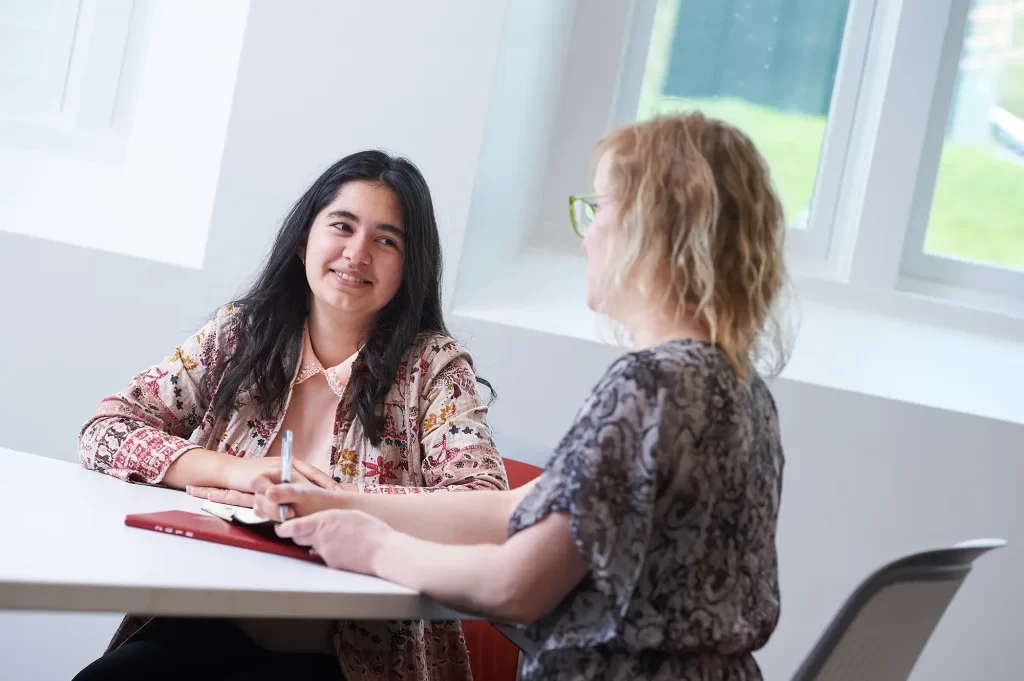
2. Navigate the Timeline
Lockbox delays have prompted U.S. Citizenship and Immigration Services (USCIS) to issue flexibilities regarding OPT periods and applications. Specifically:
- The 14-month OPT completion timeline will now begin on the date of students’ Form I-765 approval instead of the end of their academic program.
- Students who receive Form I-765 approval for less than the amount of time originally requested can request a correction to their Employment Authorization Document (EAD). USCIS will issue a new EAD with the corrected date to cover the full amount of requested OPT time.
- The deadline for refiling a rejected Form I-765 has been extended to May 31, 2021, provided the original filing was received between Oct. 1, 2020 and May 1, 2021 and consequently rejected. USCIS recommends including a copy of the rejection notice with your second filing.
- If the lockbox inadvertently accepts a Form I-765 with a missing or deficient signature, a Request for Evidence will be issued rather than a denial.
Communicating the changes will help students understand their role and responsibilities in a timely filing of their I-765 application and therefore reduce the amount of gap period between their graduation date and the start of their employment.
3. Fill The Gap
Besides advising on the filing and refiling of OPT applications, it’s important for advisors to remind students of the potential intermission between student and employee that may leave graduated international students without income and health insurance.
When an international student graduates, their eligibility for F-1 health insurance may run out depending on the policy in place at their school. And even if a student files their OPT application on the first possible date with a start date for the Monday following graduation, receives the EAD in time, has a job offer in hand for that following Monday, and their new company offers great health insurance, they may still be without health insurance if their new company has a mandatory waiting period. In the employer world, it is normal for new hires to wait a period of 30 to 90 days after their start date – in such time they are not eligible for the company’s group health insurance coverage. This is why OPT health insurance is vital to your students’ transition plans. OPT health insurance fills this gap, meaning your students are still protected, even if their filing gets delayed at a lockbox. This avoids the very real and painful conversation of a former student begging to “get back on” your health insurance coverage likely due to an emergency already incurred!
Key Takeaway
A lot goes into helping an international student navigate the transition between graduation and a new job. Lewerglobal aids in this transition by offering high-quality health insurance designed specifically for their situation. You can learn more about OPT health insurance at this link or contact us by email or live chat today.
The information provided on this website does not, and is not intended to, constitute legal advice. All information, content, and materials available on this site are for general informational purposes only. Information on this website may not constitute the most up-to-date legal or other information. This website contains links to other third-party websites. Such links are only for the convenience of the reader; The Lewer Companies does not recommend or endorse the contents of third-party sites. Readers of this website should contact their attorney to obtain advice with respect to any particular legal matter. No reader should act or refrain from acting on the basis of information on this site without first seeking legal advice from counsel in the relevant jurisdiction. Use of, and access to, this website or any of the links or resources contained within the site do not create an attorney-client relationship between the reader and website authors, contributors, or committee members and their respective employees.
Mental Health Awareness Month is coming to a close. As we wrap up the month, we here at LewerMark want to make sure our students and schools know that we’re here to support them. We hope this blog proves to be a helpful tool for advisors working to guide and aid their students. Please also check out our blog about processing grief here.
According to a recent Chegg survey, 56% of undergraduate students around the world say their mental health has suffered due to Covid-19. This likely comes as no surprise to school administrators, considering the stress of the last two semesters. But what may cause some surprise—and concern—is a recent University of Hong Kong survey that indicated a whopping 84% of international students reported moderate to high levels of stress. In addition, students who stayed in the host country experienced significantly higher levels of stress than those who went home.
This can be a difficult issue for schools to tackle. Many cultures around the world still stigmatize depression and anxiety, which will cause many students to suffer in silence rather than seek help. Even those students who do want help often don’t know where to turn, since international students are usually less aware of available services and support.
It is up to schools to support their international students who are more susceptible to mental health issues, perhaps now more than ever. Schools and advisors can care for their students by watching for signs of mental health distress, bridging the gap between students and mental health services, and communicating clearly as the pandemic drags on.
Watch for Signs
Justin Chen, the co-founder of Massachusetts General Hospital’s Center for Cross-Cultural Student Emotional Wellness and an assistant professor of psychiatry at Harvard University, spoke at a recent NAFSA conference and described signs that can indicate a student is struggling. Those signs include:
- A deterioration in personal hygiene or dress
- Dramatic weight loss or gain
- Noticeable changes in mood
- Excessive absences
- Academic problems
- Social isolation
- Unusual behaviors
- Drug and alcohol abuse
- Threats of harm to themselves or others
Bridge the Gap
If a student is showing signs of a mental health struggle, advisors can bridge the gap between the student and the services they need. Sometimes students just need someone to talk to and care about how they’re doing. Other times, students may need help finding a trained counselor and making the call. Advisors can provide a referral or, if resources exist, can direct the student to a counselor who comes from a similar cultural background or who speaks their native language. In bridging the gap, advisors may also need to break down preconceptions and stigmas and assure students that their counseling is confidential and won’t affect their transcript or visa status.
Communicate Clearly in Crisis
In the first months of the pandemic, international students were particularly stressed by the ever-changing news and sometimes contradictory messages they received. They were far from home in the middle of a pandemic, working to overcome language barriers, and trying to navigate difficult questions like whether or not they should travel back home and whether or not they would be allowed to continue or complete their degree programs. In addition, there were questions about visa status, graduate and OPT work, and financial support for non-citizens. For some students, these are questions that haven’t been fully answered yet.
So, while vaccines are providing a great deal of hope for the return to normalcy, crisis communications are still ongoing and must be done purposefully. Communication expert Paul Argenti spoke to Harvard Business Review and recommends creating and maintaining a stable team of five to seven people, including representatives from the leadership team, corporate communications, HR, and a medical expert. This team should:
- Meet regularly to monitor the situation.
- Be the main source of information about the crisis.
- Give regular updates.
- Be as transparent as possible. Explain what they know, what they don’t know, and provide their sources of information.
- Be succinct.
The goal is to communicate with students, especially the international student body, in a way that is calm, proactive, knowledgeable, and transparent. This kind of communication lessens mental stress and tells students where to go for help in a crisis.
Key Takeaway
COVID-19 has caused everyone a lot of stress and has hit international students especially hard. Schools can care for their students’ mental health by watching for signs, bridging the gap between international students and the services they need, and communicating clearly as the crisis continues. Contact LewerMark to learn how our unique partnership with LifeWorks and their cutting-edge mental health support system, My SSP (Student Support Program) can help you support your students.
Please note, effective May 14, 2021, Morneau Shepell Inc., a leading provider of technology-enabled total wellbeing solutions, has rebranded to LifeWorks Inc. The rebrand initiates a new chapter for the company and supports the organization’s commitment to delivering a continuum of care that improves lives on a global scale. Combining technology and talent, LifeWorks provides personalized, digital health solutions that feature the level of support students need, when and how they need it. The LifeWorks name was selected following an in-depth name evaluation process and extensive market research with clients and prospects in Canada, United States, United Kingdom and Australia to unify the company under one brand, while continuing to be the same trusted partner they have always been. My SSP (Student Support Program) by LifeWorks provides 24/7 access to mental health and wellbeing support for both domestic and international post-secondary students through app-based technology. Students may access live counseling support for short-term needs through telephone or text chat (app or web), or they may elect to schedule counseling support over one or more sessions. My SSP provides guaranteed access to counseling support in English, French, Spanish, Mandarin and Cantonese 24/7, plus students may request many other languages for support for scheduled sessions. Students may also request lived-experience counselor matching should they wish to be paired with a counselor or a certain faith, gender, religion, ethnicity…etc. For more information on My SSP, please visit https://myssp.app.
As states continue to take up new legalization measures, marijuana has quickly become a major issue for U.S. voters. In spite of these new and quickly changing state laws, federal marijuana laws remained unchanged. The disconnect between federal and state laws—and even the varying laws among the states—can leave international students confused.
In fact, as of this writing, states fall into five different categories regarding their marijuana laws:
● Marijuana is fully legalized in 16 states.
● Medical marijuana is legalized and possession has been decriminalized in 12 states.
● Medical marijuana is legalized, but possession is still criminalized in 14 states.
● Marijuana is decriminalized but not legalized in 2 states.
● Marijuana is illegal in all forms in 6 states.
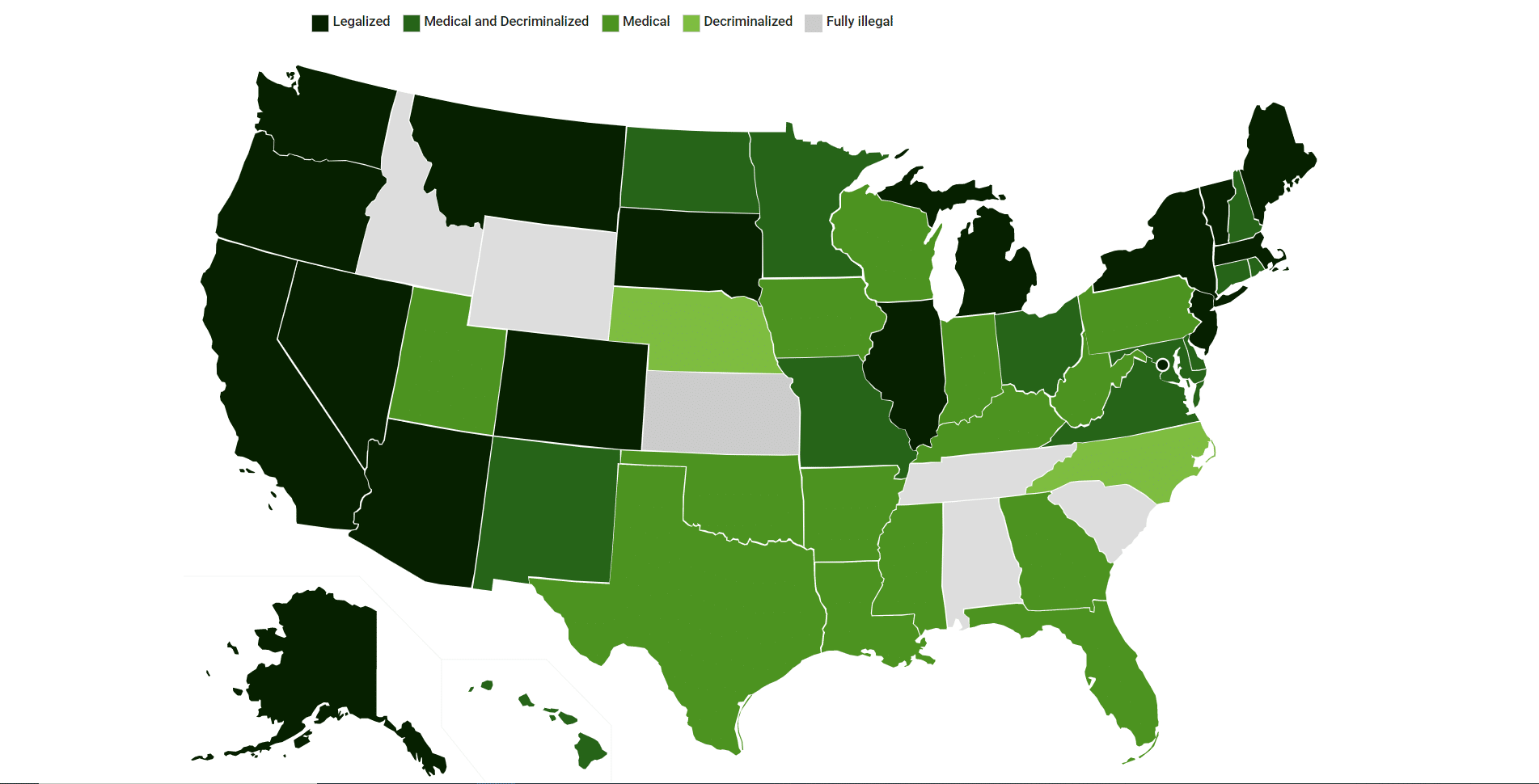
The most important thing for international students and all noncitizens* to realize is that these various state laws do not apply to them because marijuana is still a federal controlled substance. To use or possess marijuana in any form—and even to work in the legal cannabis industry—is still a crime for noncitizens and could have damaging effects on the college careers of international students.
*For the purposes of this article, “noncitizens” is defined as anyone with an immigration status other than U.S. citizenship, including lawful permanent residents, refugees and asylees, and people with temporary visas or forms of protection.
Prepare International Students for Questioning
When entering the U.S., international students may face questions related to marijuana. For example, immigration officials may ask if they used marijuana back home and whether or not they plan to continue using it during their stay in the U.S. If a student answers “yes” to either question, they may not be allowed to enter the country.
And the questions may not stop there. Even once an international student is through the gates, local authorities may still stop and question them regarding marijuana. Being approached by an officer can make anyone nervous, but this is especially true if a language barrier is present or if the student is unfamiliar with U.S. laws. International students should remember that they do have rights, including the right to remain silent and to choose to speak to an attorney before answering the official’s questions.
It is also important to warn international students to clear their texts, messages, emails, and social media accounts of anything remotely related to marijuana before their arrival.
Help International Students Avoid CBD Products
As medical and recreational marijuana are legalized, the related product offerings for consumers are increasing exponentially. It is important for international students to realize that avoiding leafy greens and buds is not enough to protect them from federal marijuana laws.
For example, a Canadian woman was recently refused entry and subsequently banned from the U.S. because she had Cannabidiol (CBD) oil in her backpack. CBD alone cannot cause a high and is used primarily for medicinal purposes, and some doctors may recommend CBD as part of a treatment plan. However, international students should be warned not to accept CBD products, even if recommended by their doctor, until they receive legal counsel. Similarly, students should avoid any consumer products containing CBD, which can be found mostly in health and beauty products.
In addition, CBD is not approved by the U.S. Food and Drug Administration (with the exception of one prescription seizure medication), and there are still many unanswered questions regarding its use and side effects.
Emphasize Caution to International Students
State marijuana laws are in flux, but federal laws are not. The Immigrant Resource Legal Center (IRLC) continues to recommend extreme caution for international students, who should not allow themselves to be linked to marijuana (or CBD) in any way. This includes never carrying marijuana or CBD products, a medical marijuana card, or paraphernalia like a pipe. Clothing and accessories with a marijuana graphic should be avoided, and international students should not discuss marijuana in texts, emails, or social media.
In addition, international students should not take jobs within the cannabis industry or jobs that require them to handle marijuana or CBD products.
Key Takeaway
At present, it would serve international students to ignore the noise surrounding marijuana laws in the U.S. While federal laws remain unchanged, students should avoid marijuana in all its forms, understand their rights, and exercise great caution when it comes to marijuana-related consumer products.
The information provided on this website does not, and is not intended to, constitute legal advice. All information, content, and materials available on this site are for general informational purposes only. Information on this website may not constitute the most up-to-date legal or other information. This website contains links to other third-party websites. Such links are only for the convenience of the reader; The Lewer Companies does not recommend or endorse the contents of third-party sites. Readers of this website should contact their attorney to obtain advice with respect to any particular legal matter. No reader should act or refrain from acting on the basis of information on this site without first seeking legal advice from counsel in the relevant jurisdiction. Use of, and access to, this website or any of the links or resources contained within the site do not create an attorney-client relationship between the reader and website authors, contributors, or committee members and their respective employees.<




